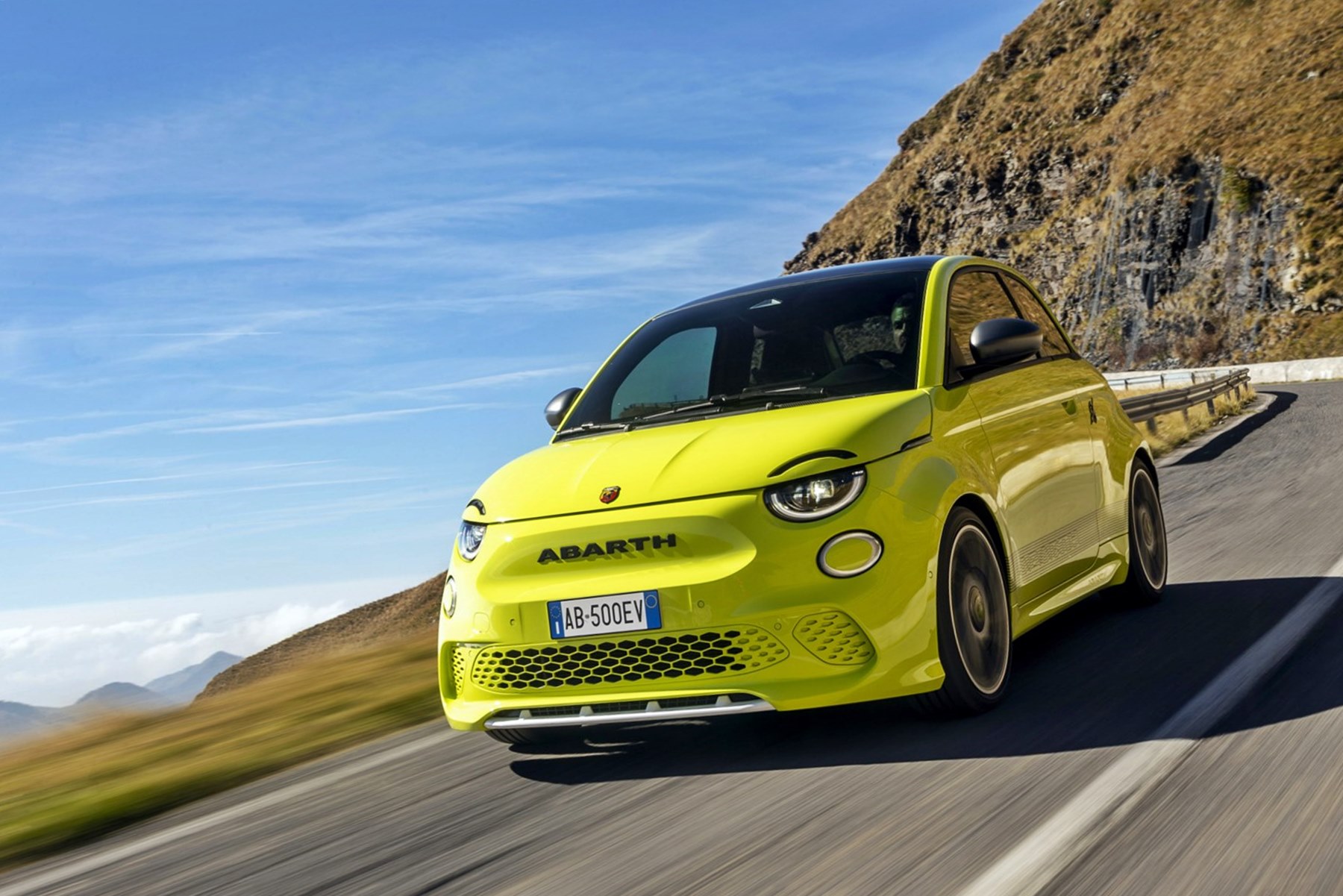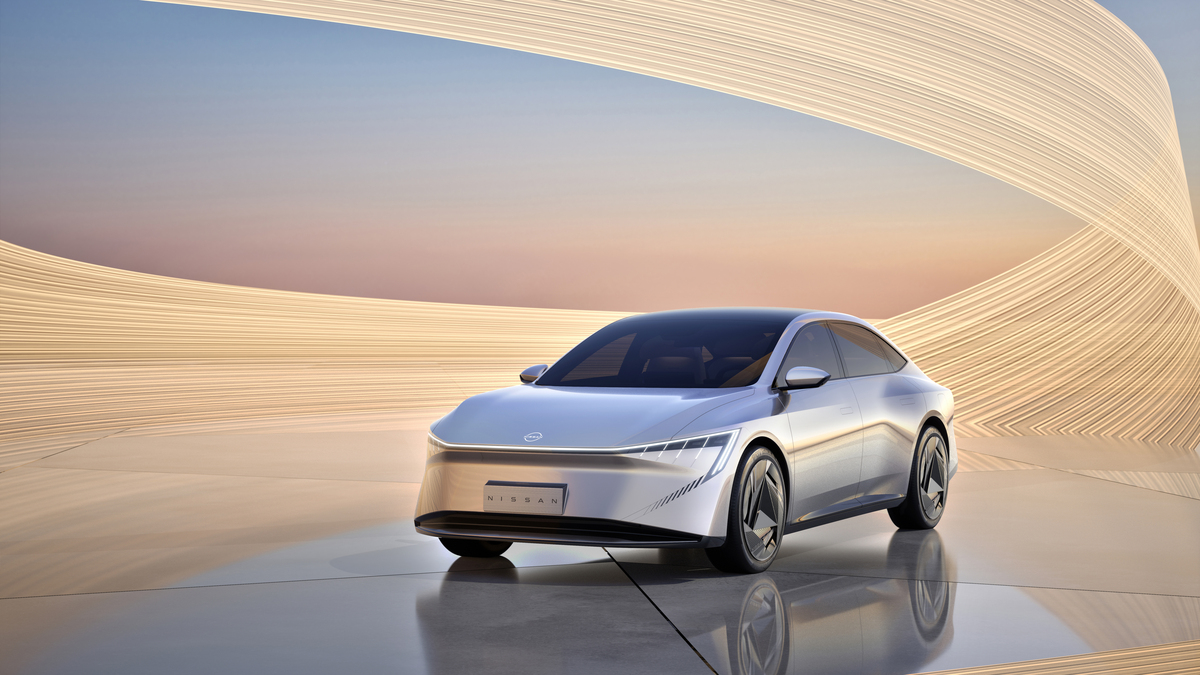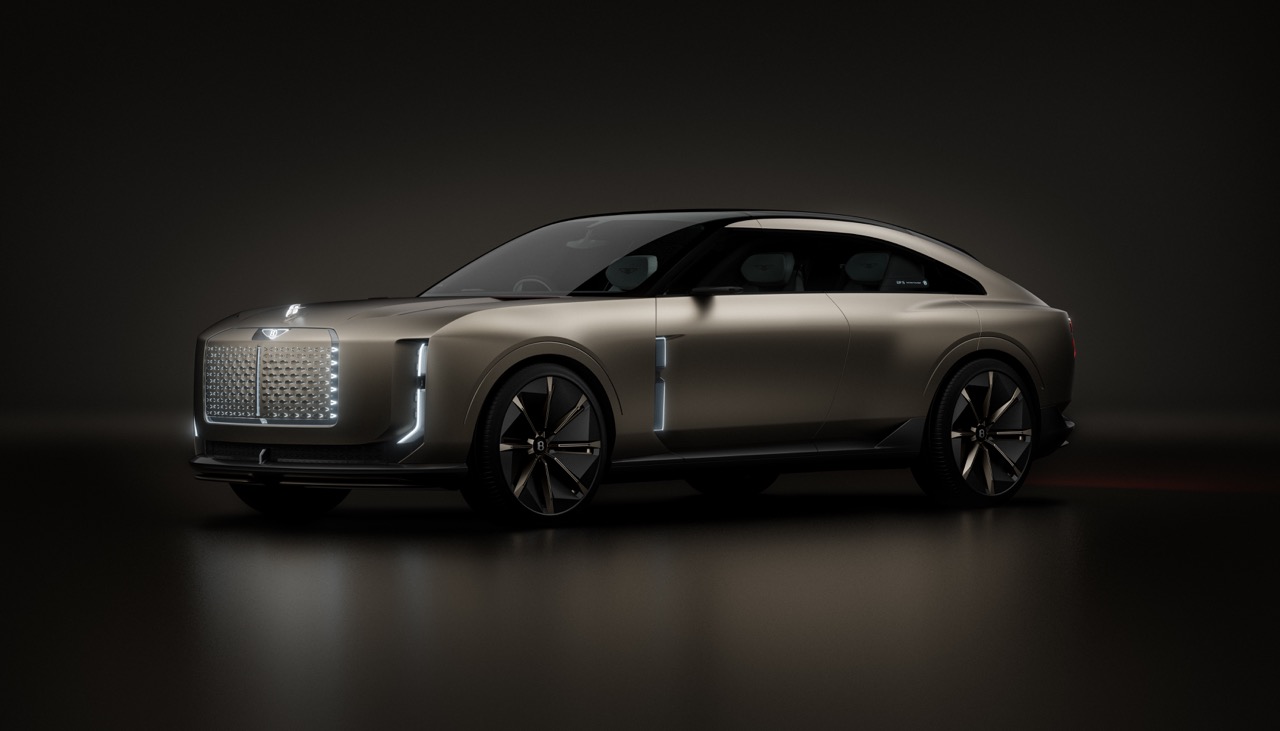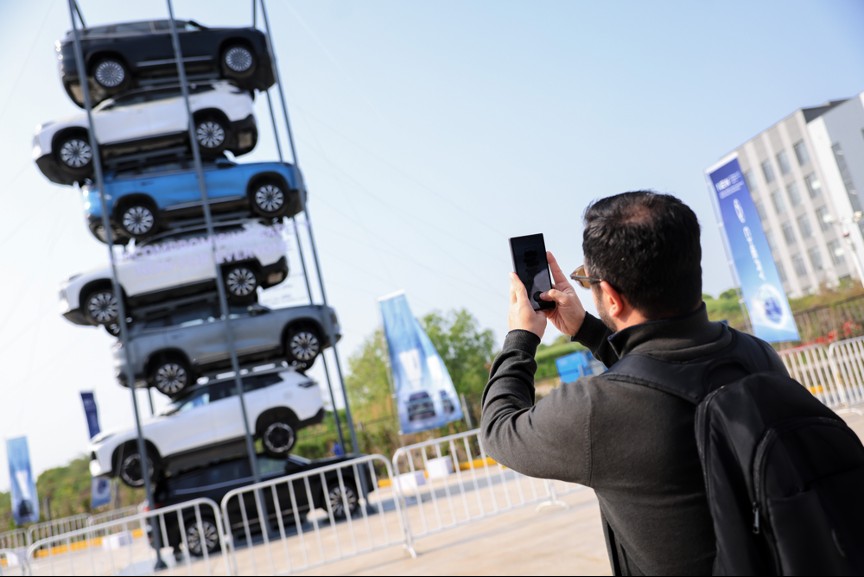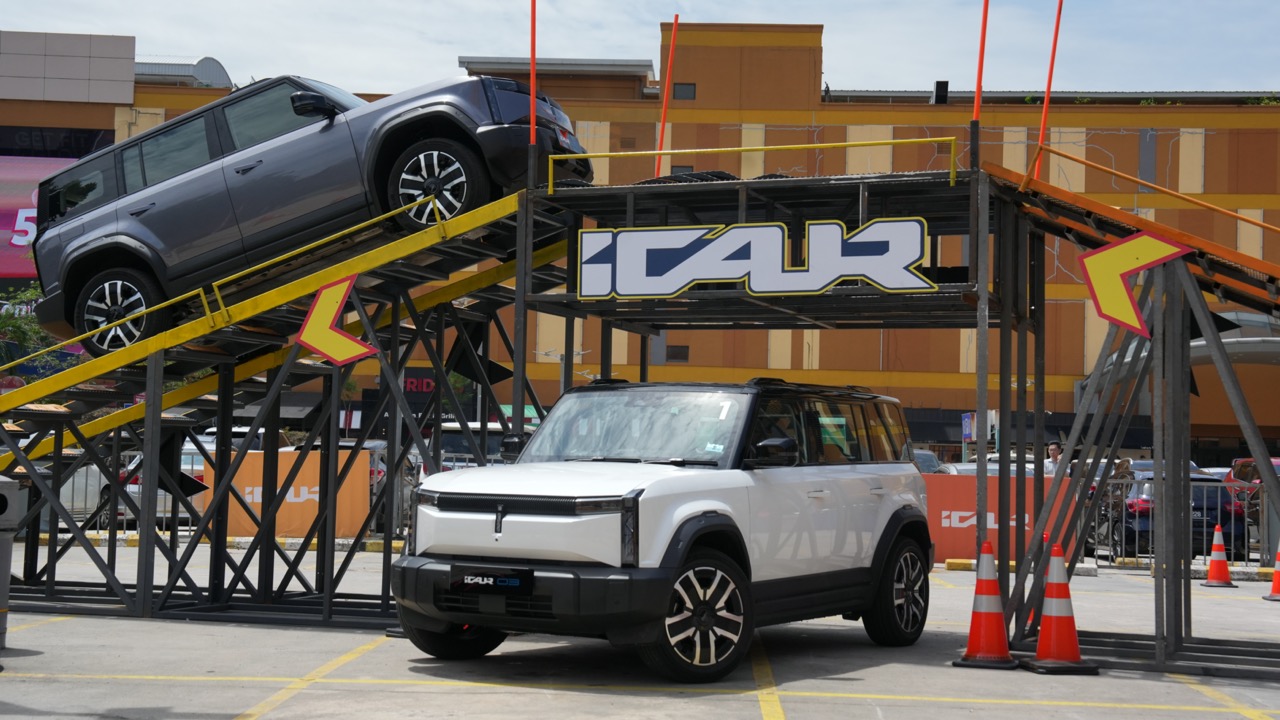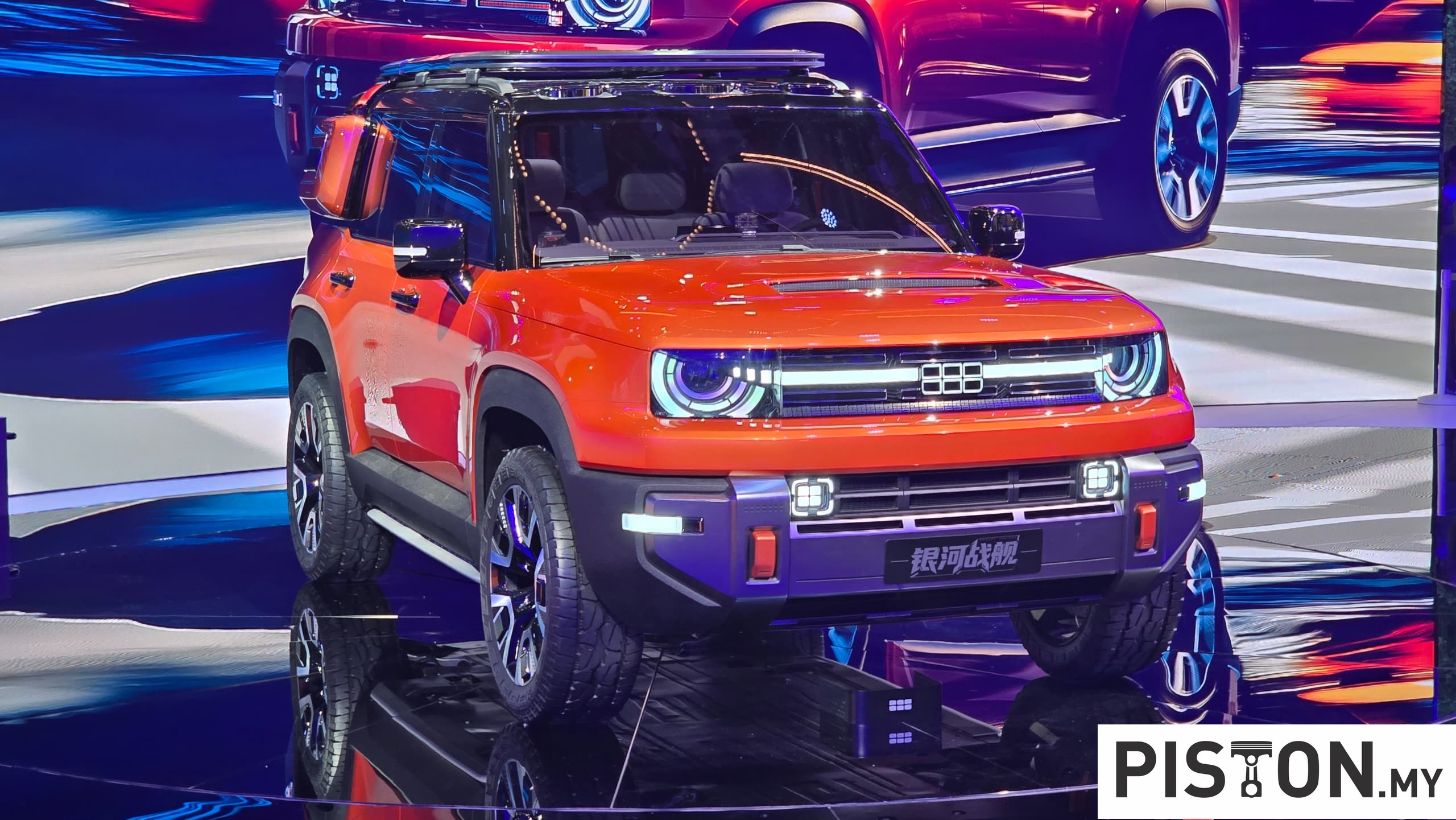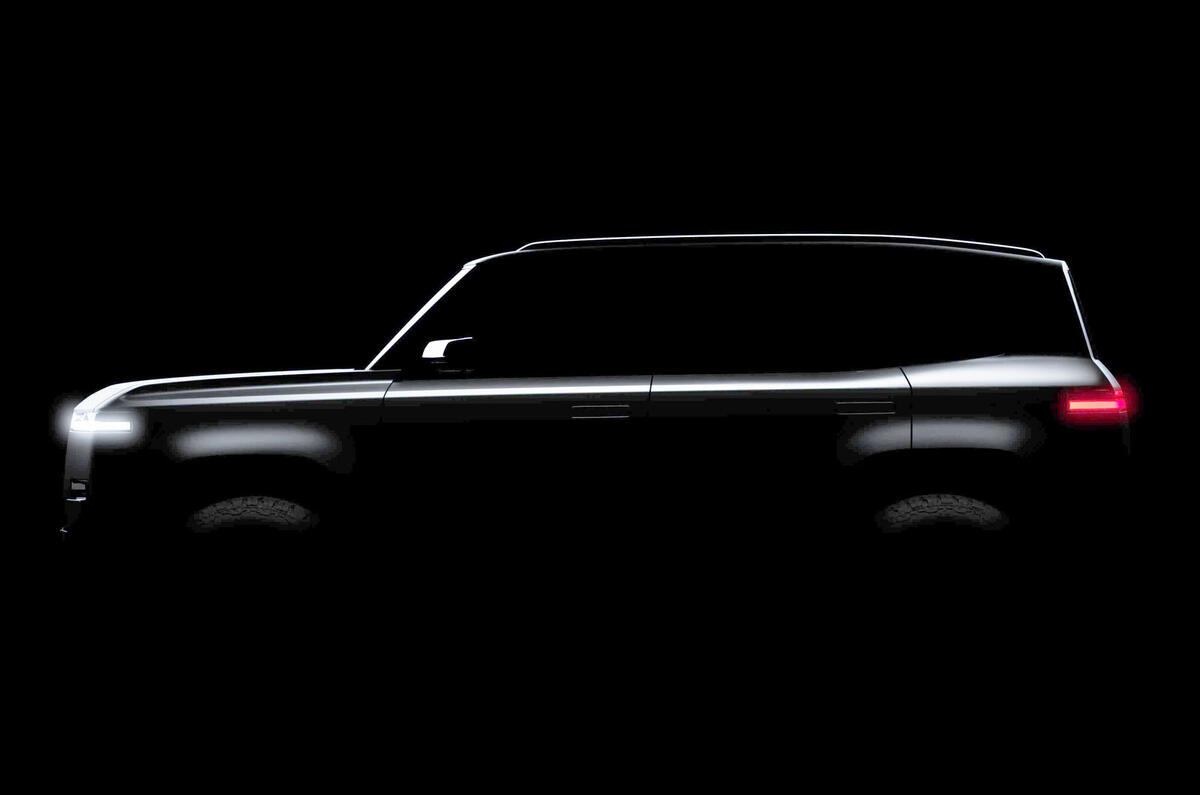Motoring enthusiasts often talk about driving as an emotional thing and while there are various kinds of emotions – stress, fear, anger – it is often the emotion of pleasure that is publicised. ‘Driving’ pleasure is often mentioned as what can be experienced from a new car and advertisements play it up in different ways.
Going together with driving pleasure for sportscars is also the sound of the engine and exhaust – a growl or a roar or even a crackle – and it is what gets the adrenaline flowing faster. The ultimate sound comes from racing cars which, not being restricted by regulations for vehicles used on public roads, are typically louder.
With electrically-powered cars, there is no combustion engine, no exhaust pipe – and therefore no sound. Environmentalists are happy with the prospect of roads becoming quieter in future as more electric vehicles (EVs) travel on them. But for those who have always loved driving and the pleasure it gives, the absence of engine and exhaust sound is a huge loss. The silence, as the saying goes, is ‘deafening’.
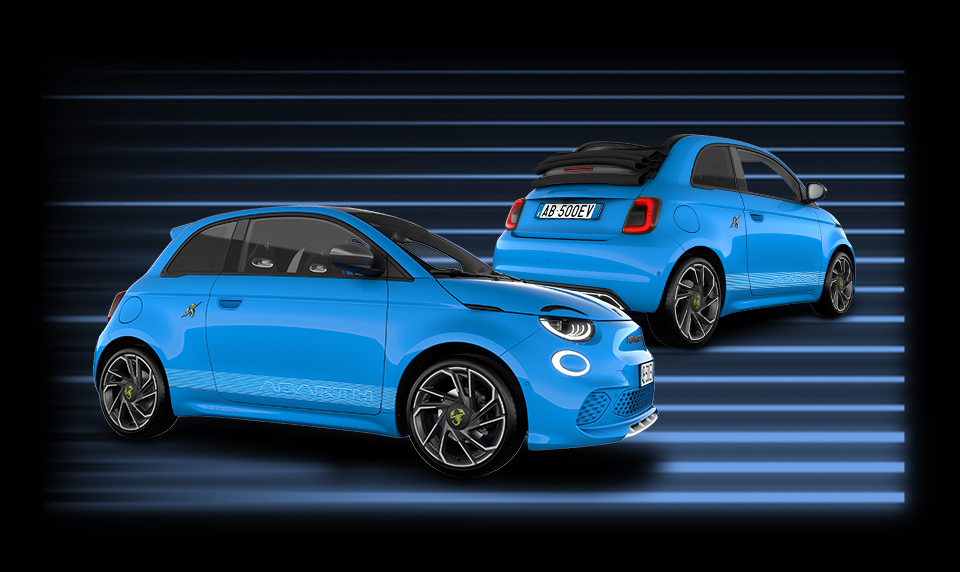
The engineers that make high-performance cars understand this emotional aspect and some companies have been working hard to ensure that those familiar sounds are not lost. BMW, for example, has IconicSounds Electric for its electrified models which creates emotionally rich ‘soundscapes’. This is not just a single sound but varied across the aural spectrum in sync with the car’s behaviour – assertive when in a sports mode, quiet when in eco mode.
Abarth, the Italian sportscar maker, is also making sure that its fans will not be disappointed when they drive the new Abarth 500e – the brand’s first ever fully electric model. The latest member of the Scorpion’s range comes with a unique Sound Generator feature which is said to be one of a kind in the electric hot hatch segment.
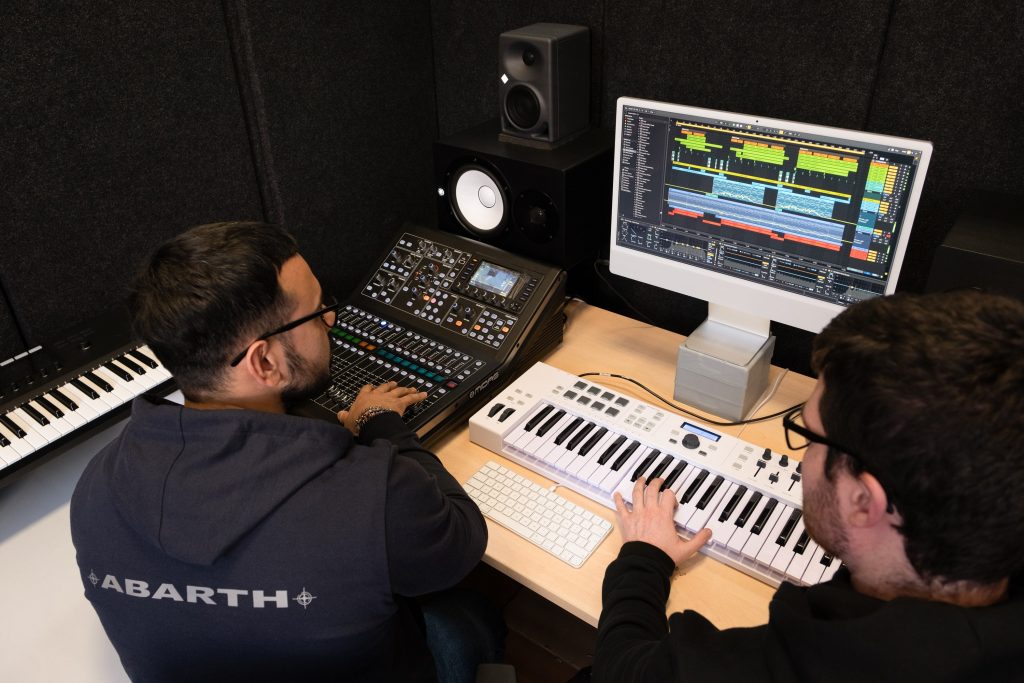
The exclusive sound system has been developed by a dedicated sound design team in collaboration with Sound Design Studios. The sound design, its development and integration were carried out at the Stellantis’ Italian NVH (Noise Vibration and Harshness) Department. the same entity that validated the sound of the historic Abarth exhaust system, the Record Monza.
The project took about 24 months, with more than 6,000 hours spent analyzing and creating the perfect sound for each phase of the driving experience. Additionally, NVH (Noise, Vibrations & Harshness) specialists dealt with sound enhancement, concentrating on both the creative and technological part of the sound creation process. They worked on the sound and demo development and as well as on the different steps of sound looping, from software development to the creation of the sound itself.
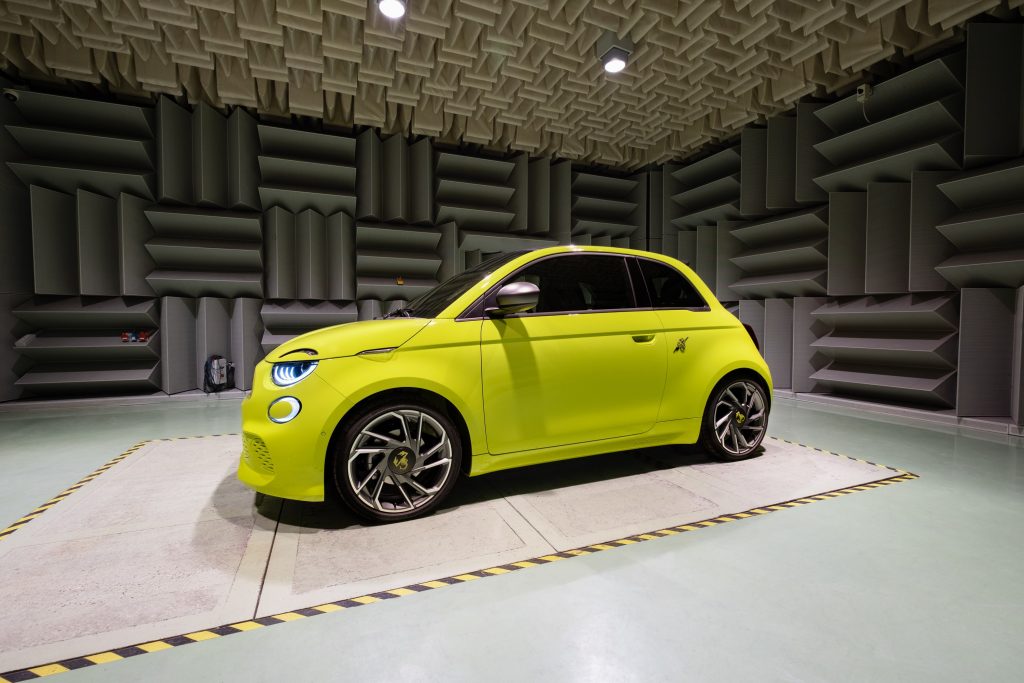
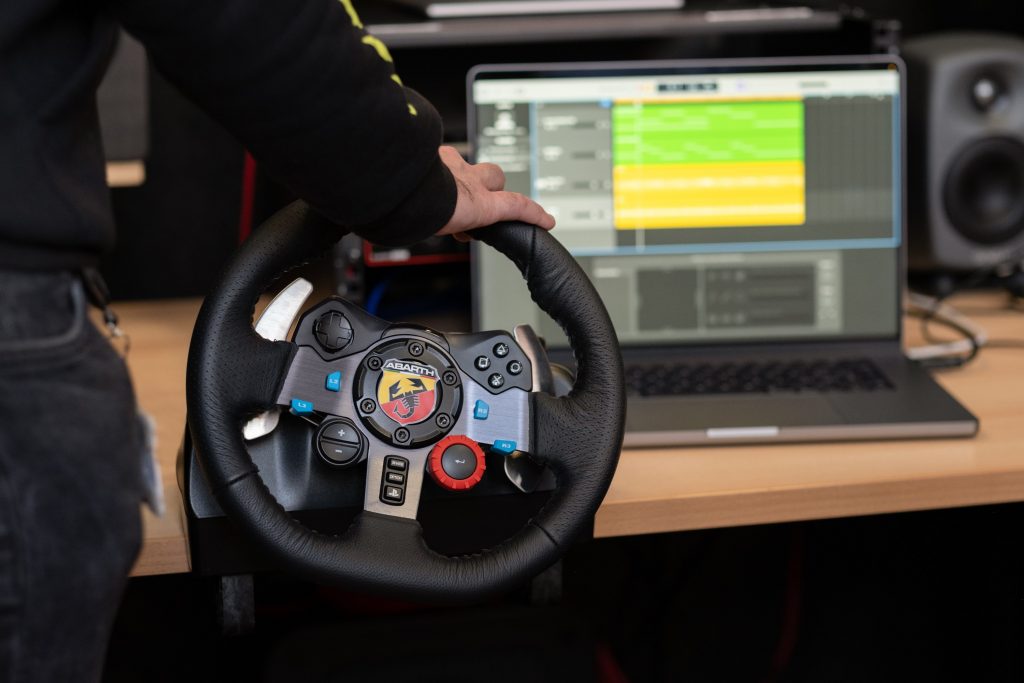
Part of the sound tests and studies were carried out in a semi-anechoic chamber – a room specifically designed to have extremely low noise levels inside, and a high degree of acoustic insulation from the exterior – in order to make accurate and reliable noise measurements. Thanks to the reflecting floor, it is possible to recreate an acoustically reflecting surface, just like a road.
To achieve a perfect output which was as close as possible to the original one, the current sound of the Abarth petrol engine was recorded throughout all the different phases of the driving experience – acceleration, deceleration, braking, fast cornering and other manoeuvres. Specific sound calibrations were carried out. And the recordings were then carefully analyzed through dedicated technical tools and processes.
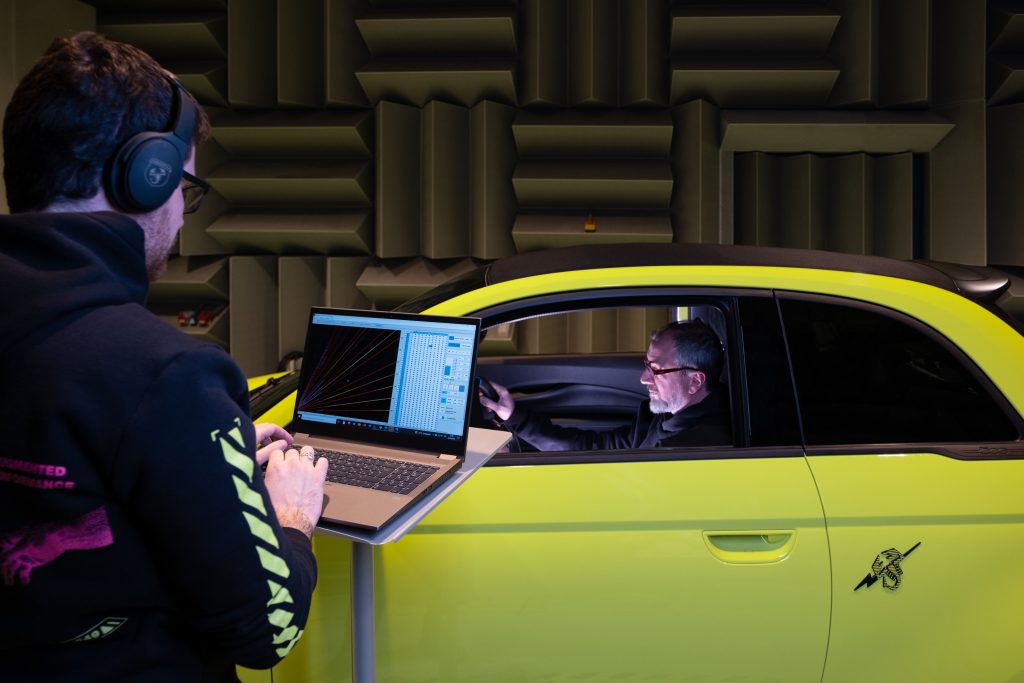
This enabled the sound engineers to extract all the distinctive Abarth frequencies, which is in essence its DNA, in order to create a new tone in a virtual matrix enriched by additional sounds. The matrix was tested offline in the studio and on the static car through various iterations and configurations to achieve the perfect blend of the output.
Specifically, thanks to software, the matrix adapts the various components of the recorded sound to achieve the best immersive result for the driver. Additional sounds were layered upon the matrix to blend the historic sound of Abarth to the feeling of the future found on the new Abarth 500e.

An important point was to balance the Sound Generator carefully to provide the driver with the most pleasant driving experience even at high speeds, respecting the homologation constraints for noise pollution and ensuring a realistic sound. The intensity of the Sound Generator System is directly proportional to the speed at which the car is driven, and the sound is to all intents and purposes processed differently through the exterior rear speaker.
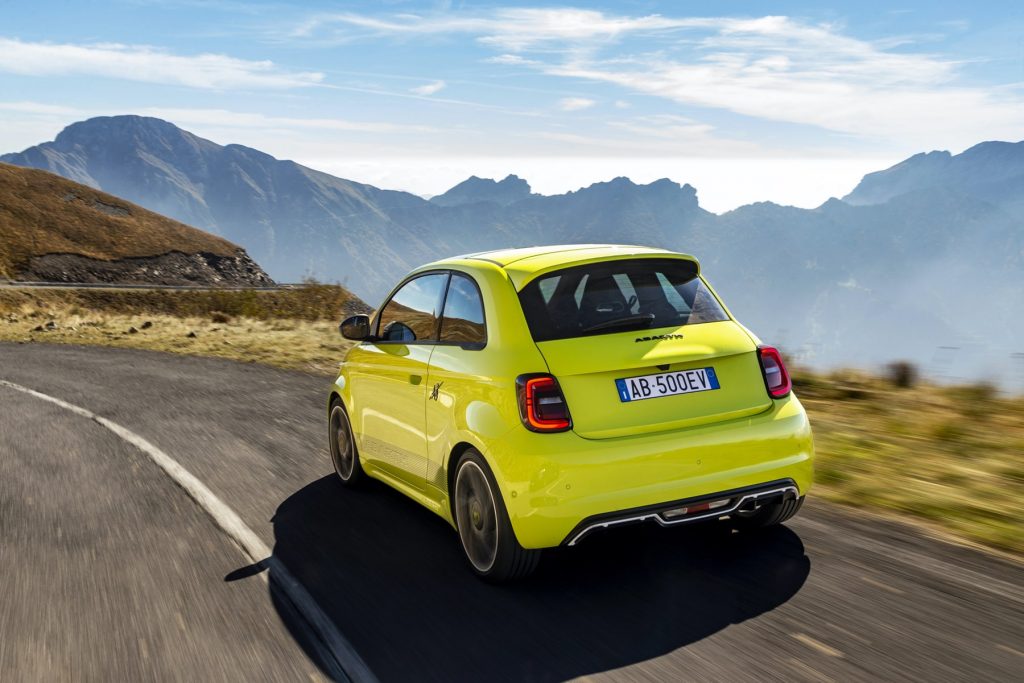
Thanks to the Sound Generator, the Abarth 500e is the only zero emissions hot hatch currently capable of evoking the historic sound of the combustion engine. It provides the powerful and emotional Abarth ‘roar’ of a sporty engine within the limits allowed by regulations, while paying homage to 75 years of racing engines.



